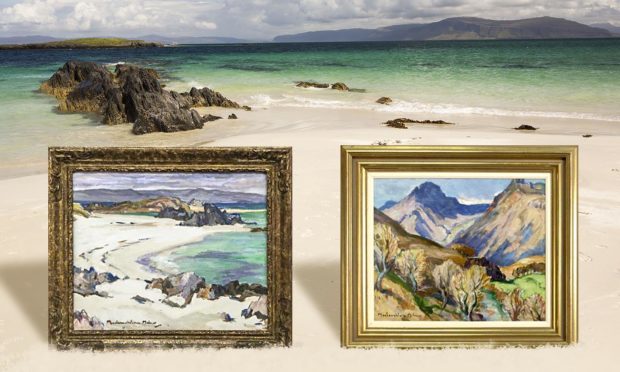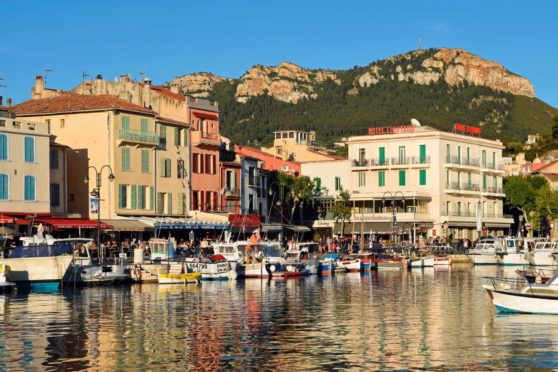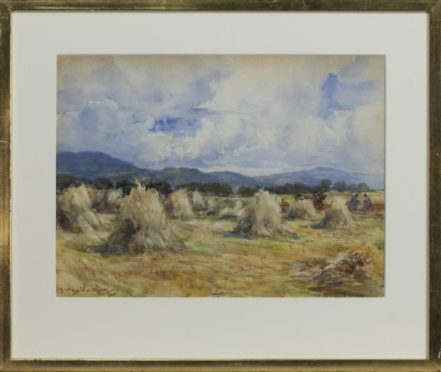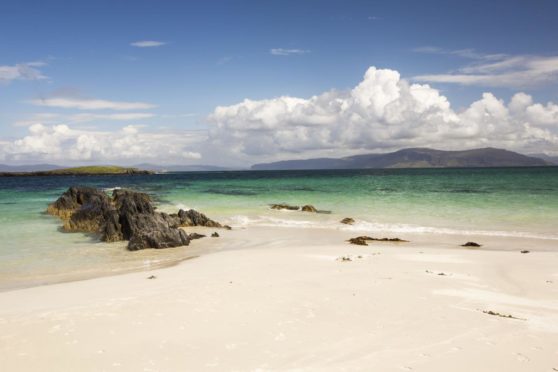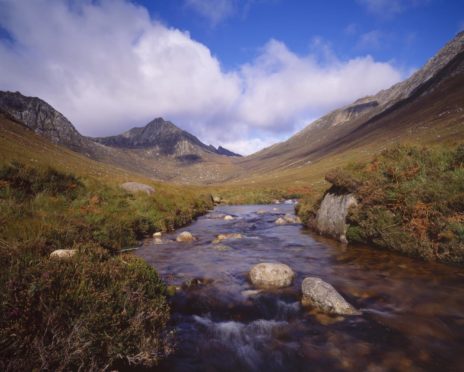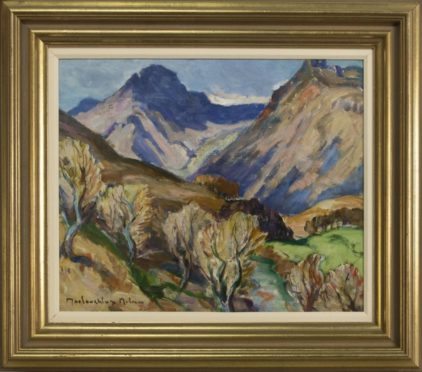A rare painting of Scottish island Iona by the Dundee artist nicknamed “The Fifth Colourist” could fetch up to £30,000 when it goes under the hammer this month.
“The Green Pool, Iona”, by renowned Dundee colourist painter John Maclauchlan Milne (JMM) RSA, has never been exhibited and has been privately owned since it was painted more than 90 years ago.
It has now come to light as part of an auction with three other JMM works, which could make an estimated £50,500 if they reach the top end of their estimate.
‘The Dundee Colourist’
JMM was born in 1885 into a family of successful artists – both his father Joseph Milne and uncle William Watt Milne were celebrated painters, and influenced his early work.
He lived his formative years in Dundee and became involved with the Dundee Art Society before enlisting in the Royal Flying Corps (the early RAF) during the First World War.
Such was his connection to his home city that even in his absence, while still serving in 1919, he was made president of the Dundee Art Society.
The landscapes of Belgium and France where he spent the war greatly influenced his work, and there was a marked change in his style during the inter-war period to reflect this.
There was already a strong artistic alliance between Scotland and France in the early 20th Century, and JMM returned to the continent in 1920.
In France, he became friendly with the famous Scottish Colourists – Peploe, Cadell, Fergusson and Hunter – who were forging a path in contemporary Scottish art.
JMM moved in the same circles as the trailblazing Scottish artists spending a lot of time in the French Riviera.
He visited the same locations and, like the Colourists, was heavily influenced by Post-Impressionist painters Paul Cezanne and Vincent van Gogh.
He had a similar, distinct painting style featuring bold colours and outlines, and this earned JMM the nickname The Fifth Colourist or The Dundee Colourist.
JMM’s first solo exhibition in the city was held at Murray’s Galleries in 1921, and many Dundee businessmen of that era invested in art.
It was sponsorship from William Boyd, managing director of iconic Dundee marmalade makers James Keiller and Sons, and head of the firm Alexander Keiller, that afforded JMM the income to travel to France.
Boyd and Keiller’s investment in JMM was repaid in original paintings and when Boyd retired from business he dedicated his time to art.
Rare painting unearthed
JMM returned to Dundee in the 1930s after the global financial crash, and turned his attention to painting Scottish landscapes.
He spent a lot of time on the West Coast of Scotland and Isle of Iona, where he painted dramatic seascapes.
During one trip in the late 1930s, he painted “The Green Pool, Iona” while staying at the island’s St Columba Hotel.
With the oil still wet on the canvas, JMM leaned his artwork in the dining room of the hotel to dry.
Also staying at the hotel was a father who had taken his daughter on a trip to Iona after the sudden death of her mother.
Spotting the paintings, the man bought two for his daughter as a wedding present, including “The Green Pool, Iona”.
The painting remained with the woman at her Glasgow home for 50 years before it was passed to a friend, and until now, has never been seen publicly.
“The Green Pool, Iona” has been given an estimate of £20,000-£30,000 when it goes to auction at McTear’s in Glasgow on September 24.
It is appearing in The Scottish Pictures Auction alongside other JMM works including “Cir Mhor from Glen Sannox” (£10,000-£15,000 estimate), “Market St Tropez” (£2,000-£4,000) and Harvest Time (£1,000-£1,500).
Market St Tropez is an “exceptionally fine and rare example” as JMM was more notable for painting in oil, and few of his French watercolours have come to the market in recent years.
It reflects the love affair he had with southern France in the 1920s, while his love for the Highlands and Islands is prevalent in his 1930s works.
McTear’s catalogue explains JMM and other artists’ affinity with Iona in particular: “This historic and sacred island has been the focus of a multitude of artists for more than two centuries.
“In the early to mid-twentieth century it was visited in the summers by many of Scotland’s most renowned painters including the Scottish Colourists Cadell and Peploe.
“It was generally the case that when times were tough for artists, collectors would more readily invest in an Iona painting than any other subject.”
The islands are calling
It was one of JMM’s paintings of Iona that caught the eye of investors in the US.
In 1938, one of his paintings – The Sound of Iona – was chosen to hang in the New York headquarters of the International Business Machines Corporation, better known today as multinational technology firm IBM.
IBM wanted to furnish their Madison Avenue base with contemporary artwork from the 79 countries in which their products were used.
They asked the director of the leading art gallery in each country to choose a painting for the collection, and Dundee’s JMM was chosen to represent Scotland ahead of many better-known artists.
In the same year, JMM was made a fellow of the Royal Scottish Academy and he went on to have exhibitions in London and New York.
By the end of the decade, the islands were calling and he left Dundee and moved permanently to the Isle of Arran.
His swansong to his life in the city was a final exhibition at his Nethergate studio in 1940.
He spent the rest of his career on Arran painting idyllic depictions of white coastal cottages and turquoise seas, more akin to the French Riviera, until his death in 1957.
JMM’s work is still held at galleries all over the UK, and he has never been forgotten in Dundee where a centenary exhibition was held at the city’s art gallery and museum in 1985.
See more like this:
